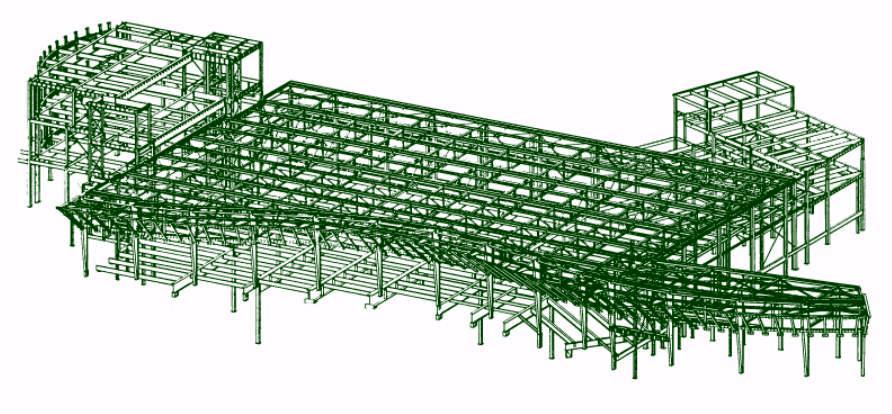Waitrose, Surbiton
Waitrose Surbiton is a building fully framed in structural steel where a full package of design information was passed to the steel fabricator. This new development comprises a supermarket with a 1917m2 (20,630sq ft) sales floor suspended over a six metre deep basement. The basement accommodates warehouse storage including an unloading bay for heavy goods vehicles and is reached via a ramp down from street level. There is a 15 metre diameter turntable at basement level to assist the heavy goods vehicle movements.

Staff accommodation is provided in a two-storey block over part of the sales floor with mechanical plant housed in a three-storey area to the rear. The roof spans over the column-free sales floor are up to 37 metres. Spans of up to 25 metres are needed where the sales floor is above the basement and loading bay.
Over the last 12 years and in recognition of the need to improve the competitiveness of the European constructional steelwork industry, the steel industry, including suppliers and fabricators, has developed a process known as CIMsteel (computer integrated manufacturing in constructional steelwork). The concept involves the introduction of techniques similar to those adopted in manufacturing industries such as automobile and aerospace (See Engitect Issue 5 for full article)
This new process was used in the design and construction of Waitrose Surbiton. The implications for the design team of such a process are far reaching. One obvious requirement is that the dimensional requirements of the full steel frame must be established before the computer model can be finalised. Any subsequent changes, even minor dimensional alterations, risk disrupting the manufacturing process. Thus the task imposed upon the design team is exacting. At the moment most fabricators develop the computer model from two-dimensional drawings. We are now looking at being able to provide the fabricator with three dimensional drawings.
The computer model for Waitrose Surbiton is shown in Engitect Issue 5. The development team included Waitrose Architects supported by DMWR, Hurst Peirce + Malcolm LLP as structural engineers, quantity surveyors E C Harris, main contractor Wates and steel fabricator Quantrills.
For other examples of HPM's work see Euston House or Engitect
